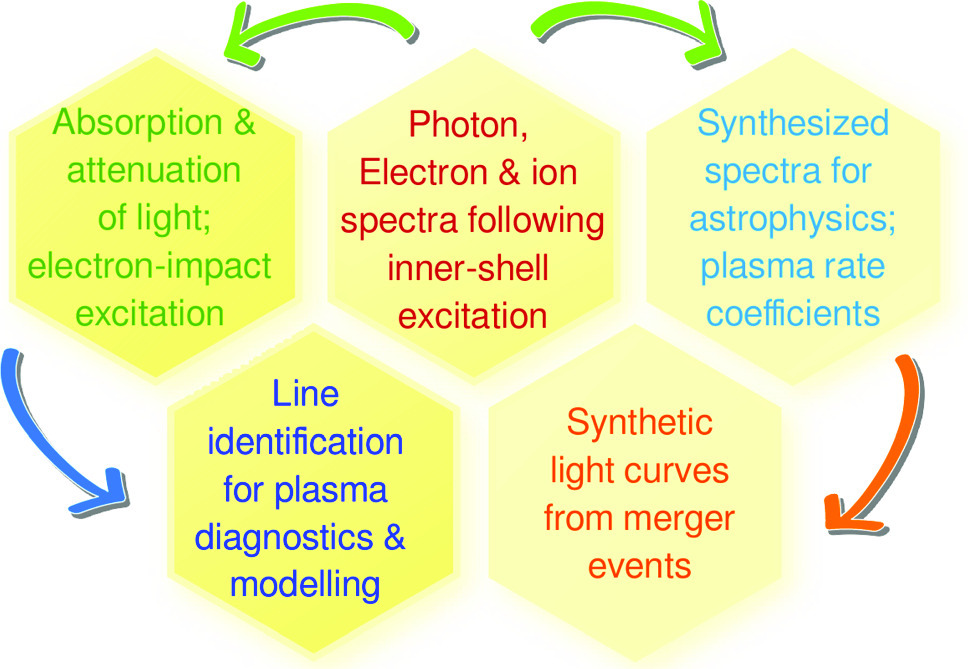https://doi.org/10.1140/epjd/s10053-024-00865-z
Regular Article - Atomic Physics
Merits of atomic cascade computations
1
Helmholtz-Institut Jena, Fröbelstieg 3, 07743, Jena, Germany
2
GSI Helmholtzzentrum für Schwerionenforschung, 64291, Darmstadt, Germany
3
Theoretisch-Physikalisches Institut, Friedrich-Schiller-Universität Jena, 07743, Jena, Germany
4
Indian Institute of Technology Roorkee, 247667, Roorkee, Uttarakhand, India
5
Key Laboratory of Atomic and Molecular Physics and Functional Materials of Gansu Province, College of Physics and Electronic Engineering, Northwest Normal University, 730070, Lanzhou, People’s Republic of China
6
I. Physikalisches Institut, Justus-Liebig-Universität Giessen, Heinrich-Buff-Ring 16, 35392, Giessen, Germany
7
Helmholtz Forschungsakademie Hessen für FAIR (HFHF), GSI Gesellschaft für Schwerionenforschung, Campus Giessen, 35392, Giessen, Germany
Received:
16
February
2024
Accepted:
7
May
2024
Published online:
14
June
2024
Atomic cascades refer—first and foremost—to the stepwise de-excitation of excited atoms owing to the emission of electrons or photons. Apart from dedicated experiments at storage rings and synchrotrons, such cascades frequently occur in astro and plasma physics, material research, surface science and at various places elsewhere. In addition, moreover, “atomic cascades” have been found a useful concept for modeling atomic behavior under different conditions, for instance, when dealing with the photoabsorption of matter, the generation of synthesized spectra, or for determining a rather wide class of (plasma) rate coefficients. We here compile and discuss several atomic cascades (schemes) that help predict cross sections, rate coefficients, electron and photon spectra, or ion distributions. We also demonstrate how readily these schemes have been implemented within JAC, the Jena Atomic Calculator. Emphasis is placed on the classification of atomic cascades and their (quite) natural breakdown into cascade computations, to deal with the electronic structure and transition amplitudes of atoms and ions, as well as the cascade simulation of those properties and spectra, that are experimentally accessible. As an example, we show and discuss the computation of dielectronic recombination plasma rate coefficients for beryllium-like gold ions. The concept of atomic cascades and its implementation into JAC can be applied for most ions across the periodic table and will facilitate the modeling and interpretation of many forthcoming observations.
© The Author(s) 2024
 Open Access This article is licensed under a Creative Commons Attribution 4.0 International License, which permits use, sharing, adaptation, distribution and reproduction in any medium or format, as long as you give appropriate credit to the original author(s) and the source, provide a link to the Creative Commons licence, and indicate if changes were made. The images or other third party material in this article are included in the article’s Creative Commons licence, unless indicated otherwise in a credit line to the material. If material is not included in the article’s Creative Commons licence and your intended use is not permitted by statutory regulation or exceeds the permitted use, you will need to obtain permission directly from the copyright holder. To view a copy of this licence, visit http://creativecommons.org/licenses/by/4.0/.
Open Access This article is licensed under a Creative Commons Attribution 4.0 International License, which permits use, sharing, adaptation, distribution and reproduction in any medium or format, as long as you give appropriate credit to the original author(s) and the source, provide a link to the Creative Commons licence, and indicate if changes were made. The images or other third party material in this article are included in the article’s Creative Commons licence, unless indicated otherwise in a credit line to the material. If material is not included in the article’s Creative Commons licence and your intended use is not permitted by statutory regulation or exceeds the permitted use, you will need to obtain permission directly from the copyright holder. To view a copy of this licence, visit http://creativecommons.org/licenses/by/4.0/.





